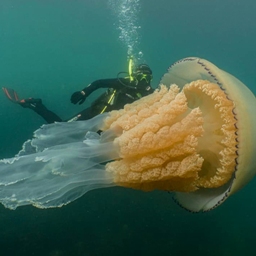Experts have yet to discover several hundred more species of mammals. In addition, 5,000 viruses unknown to science were discovered in the ocean, 17 new species of millipedes in the Appalachians, a new species of turtle on the Galapagos Islands, and a new species of jellyfish in the depths of the bay near California.
American zoologists have discovered 17 new species of centipedes that live in the forests of the Appalachian mountain system. One of them, Nannaria swiftae, was named after the famous singer Taylor Swift. Zoologists annually describe hundreds of previously unknown species of insects, spiders and other invertebrates. Most of these discoveries go unnoticed by the general public. However, scientists have a way to draw attention to their work. To do this, they just need to name the new species after a celebrity or popular culture character. For example, several years ago the armored mite Trachyoribates viktortsoii received the name Viktor Tsoi. And the name of the Australian predatory fly Humorolethalis sergius refers to Deadpool, a character from Marvel comics.
The authors of another work by the MBARI Aquarium Research Institute believe that two more previously unknown species of jellyfish – atolls – live in the depths of Monterey Bay in California. Scientists hope to eventually describe these new branches of the Atolla family tree. The new discovery is just one of millions of species that live in the deep sea, many of which are still unknown to humans.
On April 16, the Spanish publication El Pais reported the discovery of a new species of giant tortoise on the oldest island of the Galapagos archipelago, San Cristobal. The turtles from the coastal San Cristobal zone had a different shell than the turtles in the humid zone, whose remains were analyzed by experts in the last century.
A new study published in the journal Science identified 5,504 new marine RNA viruses and doubled the number of known types of RNA viruses. Scientists analyzed the genetic material of microorganisms living in the ocean and found thousands of previously unknown RNA viruses. For better understanding, this discovery doubled the number of known biological groups of viruses.
New viruses have also been discovered in the glaciers of Tibet. A research team led by scientists from Ohio State University took ice samples from the Ghulia Glacier on the Tibetan Plateau. The researchers sequenced the genomes of 33 viruses found in these samples. Four of them turned out to be bacteriophage viruses (they are capable of destroying only bacteria), and the remaining 28 viruses were not similar to any infectious agent known to science.
Zoologists have also discovered that about a third of all mammal species actually consist of several species, some of which have not yet received a scientific description, reports the online scientific journal “N+1”.. The most likely division awaits species that are distinguished by small size, have a wide range and live in a variable climate.





